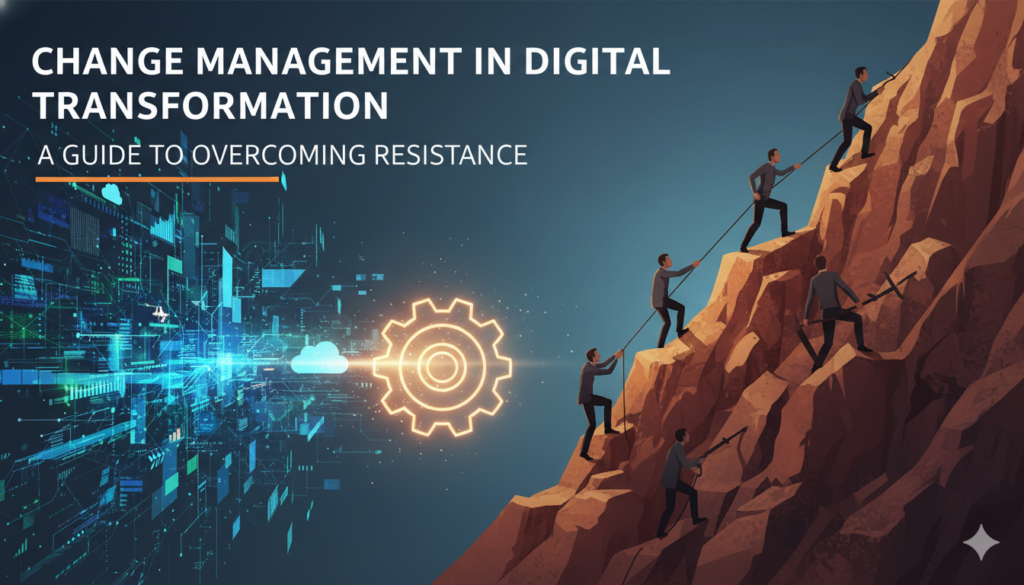The Mistakes That Sink First-Time Founders
Starting a company is exciting – but for first-time founders, it’s also a minefield.
You’re juggling a hundred things: building the product, pitching investors, managing a team (or doing it all solo), and constantly firefighting.
But most startups don’t fail because of lack of hustle – they fail because first-time founders make avoidable mistakes.
From skipping customer validation to hiring the wrong people or ignoring mental health, these missteps often show up early but don’t feel like mistakes at the time.
This post breaks down the 10 most common traps first-time founders fall into – and how to avoid them with practical, hard-earned advice.
No fluff. Just stuff founders wish they knew before things blew up.
Whether you’re pre-MVP or post-launch, this is your cheat sheet to not learning everything the hard way.
Mistake #1: Falling in Love with the Idea, Not the Problem
It starts with a spark – “What if we built X for Y?”
You imagine the logo, the UI, the pitch. It feels like magic. But here’s the trap: you’re romancing the solution, not solving a real problem.
Why it happens:
- First-time founders often build for themselves, not a specific market.
- Ideas feel exciting – problems feel messy.
- It’s easier to fantasize about a product than to understand real user pain.
Warning signs:
- You haven’t spoken to actual users yet.
- You defend the idea more than you question it.
- No one seems “desperate” for what you’re building.
How to avoid it:
- Fall in love with the problem, not your product.
- Talk to 10–15 people in your target market and ask how they solve it today.
Let the insights shape the solution – not the other way around.
Mistake #2: Skipping Validation
You’ve got momentum, the idea feels solid, and you’re itching to build – so you dive straight into development.
But skipping validation is like setting out on a road trip without checking the map – you might move fast, but you’ll likely end up nowhere.
Why it happens:
- Fear that someone will “steal” the idea
- Overconfidence in personal assumptions
- Confusing interest with intent (friends saying “that’s cool” ≠ real demand)
Warning signs:
- You haven’t tested the idea with anyone outside your circle
- No one has committed time, money, or even an email
- You’re avoiding feedback because it might kill the buzz
How to avoid it:
- Create a landing page, waitlist, or clickable prototype
- Talk to strangers – not just friends or team
- Run small ad tests or cold outreach campaigns to see if anyone bites
- Validate before you build – always.
Mistake #3: Building the “Perfect” Product Too Early
You want to impress. So you spend months perfecting every feature, polishing the design, and chasing the “wow” factor. But by the time you launch, no one’s waiting – or worse, you’ve built the wrong thing.
Why it happens:
- Fear of launching something “unfinished”
- Confusing quality with completeness
- Ego: “If it’s not amazing, no one will care”
Warning signs:
- You keep pushing launch dates “just a few weeks more”
- The product has features no one asked for
- You’re guessing, not iterating based on user feedback
How to avoid it:
- Ship a Minimum Lovable Product (MLP) – something small, useful, and testable
- Launch early and iterate fast
- Use real user behavior to guide what gets built next – not your wishlist
Speed kills ego. Launch small, learn fast, grow smart.
Mistake #4: Hiring Too Fast (or Too Cheap)
In the early days, every hire is critical – but many first-time founders either rush to hire or opt for the cheapest option, and both can backfire hard.
Why it happens:
- Pressure to scale quickly
- Inexperience with hiring processes or evaluating talent
- Desire to save cash by outsourcing or underpaying
Warning signs:
- You’re hiring before there’s clear work or revenue
- You choose speed or cost over skill and alignment
- You’re constantly managing, redoing, or patching poor-quality work
How to avoid it:
- Hire slow and intentionally – define roles, outcomes, and culture fit
- Focus on versatile generalists in early stages, not just specialists
- Don’t treat hiring as delegation – treat it as co-ownership
- Invest in people who can grow with you, not just deliver on Day 1
One wrong hire early on can drain months of progress.
Mistake #5: Trying to Do Everything Alone
You’re the founder – so you build, market, design, pitch, sell, and support. Sounds heroic, right? But in reality, trying to wear every hat leads to burnout, bad decisions, and bottlenecks.
Why it happens:
- Fear of losing control or diluting the vision
- Budget constraints
- Pride in being a solo “hustler”
Warning signs:
- You’re working 12–14 hour days and still feel behind
- You resist delegating because “no one can do it like me”
- Progress slows down the more you try to scale
How to avoid it:
- Identify your zone of genius and delegate the rest
- Use freelancers or part-time help for tasks outside your core
- If possible, find a co-founder or operator who complements you
- Trust doesn’t mean letting go – it means growing faster
A founder’s job isn’t to do everything – it’s to make sure everything gets done.
Mistake #6: Not Knowing Your Numbers
You might be building a world-changing product, but if you don’t know your burn rate, runway, CAC, or revenue targets, you’re running blind.
First-time founders often focus so much on building and selling that they ignore the numbers – until they’re out of money or out of options.
Why it happens:
- Intimidation or inexperience with financial modeling
- Belief that “the product will take care of the rest”
- Prioritizing growth over sustainability
Warning signs:
- You don’t know how many months of runway you have
- You’re surprised by expenses or cash flow issues
- You can’t clearly explain your unit economics
How to avoid it:
- Track basic metrics: Burn rate, Runway, CAC, LTV, MRR/ARR
- Use tools like Google Sheets, Finmark, or Stripe Atlas
- Make financial check-ins part of your weekly/monthly founder routine
Knowing your numbers isn’t just for investors – it’s for your survival.
Mistake #7: Lack of a Go-to-Market (GTM) Strategy
You’ve built the product, it works, and you’re ready to launch… but to whom? Without a clear GTM strategy, you end up shouting into the void.
Why it happens:
- Overfocus on product, underfocus on distribution
- Belief that “if it’s good enough, it will sell itself”
- No clarity on who the ideal customer is or how to reach them
Warning signs:
- You’re unsure where your first 100 users will come from
- Messaging feels generic or all over the place
- You’re trying every channel – but nothing’s sticking
How to avoid it:
- Define your Ideal Customer Profile (ICP) and their top pain points
- Start with one or two focused channels: content, cold email, paid ads, partnerships, etc.
- Build a GTM plan with clear steps: awareness → acquisition → conversion
Even the best products need a plan to reach people who need them most.
Mistake #8: Avoiding Hard Conversations
Whether it’s with a co-founder, an early hire, an investor, or even yourself – dodging difficult conversations can quietly wreck your startup.
Founders often delay tough talks about equity, performance, burnout, or misalignment… until it’s too late to fix.
Why it happens:
- Fear of conflict or damaging relationships
- Hoping problems will “sort themselves out”
- Inexperience with tough leadership moments
Warning signs:
- Silent tension in the team that’s “easier to ignore”
- Vague roles, unclear equity splits, or unspoken resentment
- A growing gap between what’s said and what’s felt
How to avoid it:
- Set the tone early – transparency is part of your culture
- Have regular founder/partner 1:1s to surface issues
- Use tools like Founder Agreements or mediation frameworks (e.g. “Situation-Behavior-Impact”)
- Remember: clarity now prevents chaos later
Tough conversations don’t break teams – avoidance does.
Mistake #9: Chasing Growth Before Product-Market Fit
It’s tempting to scale fast – raise a round, run ads, hire sales, pump out features. But if you haven’t nailed product-market fit, all that growth effort becomes expensive noise.
Why it happens:
- Pressure from investors or startup hype culture
- Confusing early interest with sustainable demand
- Desire to “look successful” before actually solving the core problem
Warning signs:
- Low retention or high churn, even if acquisition is strong
- Constantly adding features to “keep users engaged”
- Growth numbers look good but don’t translate to real traction
How to avoid it:
- Focus on retention and usage first – do users come back and love it?
- Use frameworks like PMF surveys (“How disappointed would you be if X went away?”)
- Delay scaling until you see consistent, organic pull from users
Sustainable growth follows product love – not the other way around.
Mistake #10: Not Taking Care of Themselves (Burnout Trap)
Founders often wear exhaustion like a badge of honor – late nights, skipped meals, constant stress. But you can’t build a sustainable business on an unsustainable life.
Burnout doesn’t just affect your health – it clouds your judgment, kills creativity, and strains relationships.
Why it happens:
- Belief that rest = weakness
- Lack of boundaries between “work” and “everything else”
- Fear of slowing down or losing momentum
Warning signs:
- Constant fatigue, brain fog, or irritability
- Losing passion for what once excited you
- Avoiding non-work activities or relationships
How to avoid it:
- Set a work-life rhythm, not just a schedule
- Build support systems: mentors, therapists, founder groups
- Celebrate rest as a strategy – not a luxury
- Remember: your startup runs on your energy – protect it like your runway
Burnout doesn’t look like failure – until it is.
Learn Fast, Fail Less
Mistakes are part of the founder journey – but they don’t all have to be your mistakes.
Most of what sinks first-time startups isn’t lack of talent or effort. It’s blind spots – avoidable missteps that compound when left unchecked.
Now you know the 10 biggest traps. The next step? Slow down, reflect, and course-correct before those mistakes become too costly.
Whether you’re still pre-product or already live, the key to longevity is self-awareness + steady execution.








